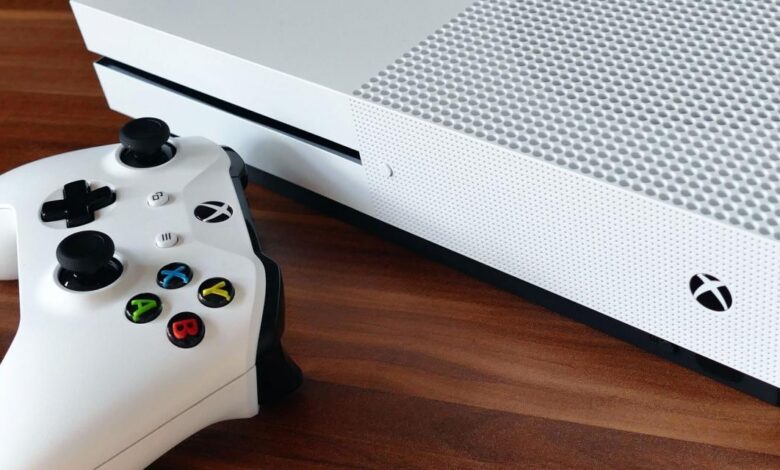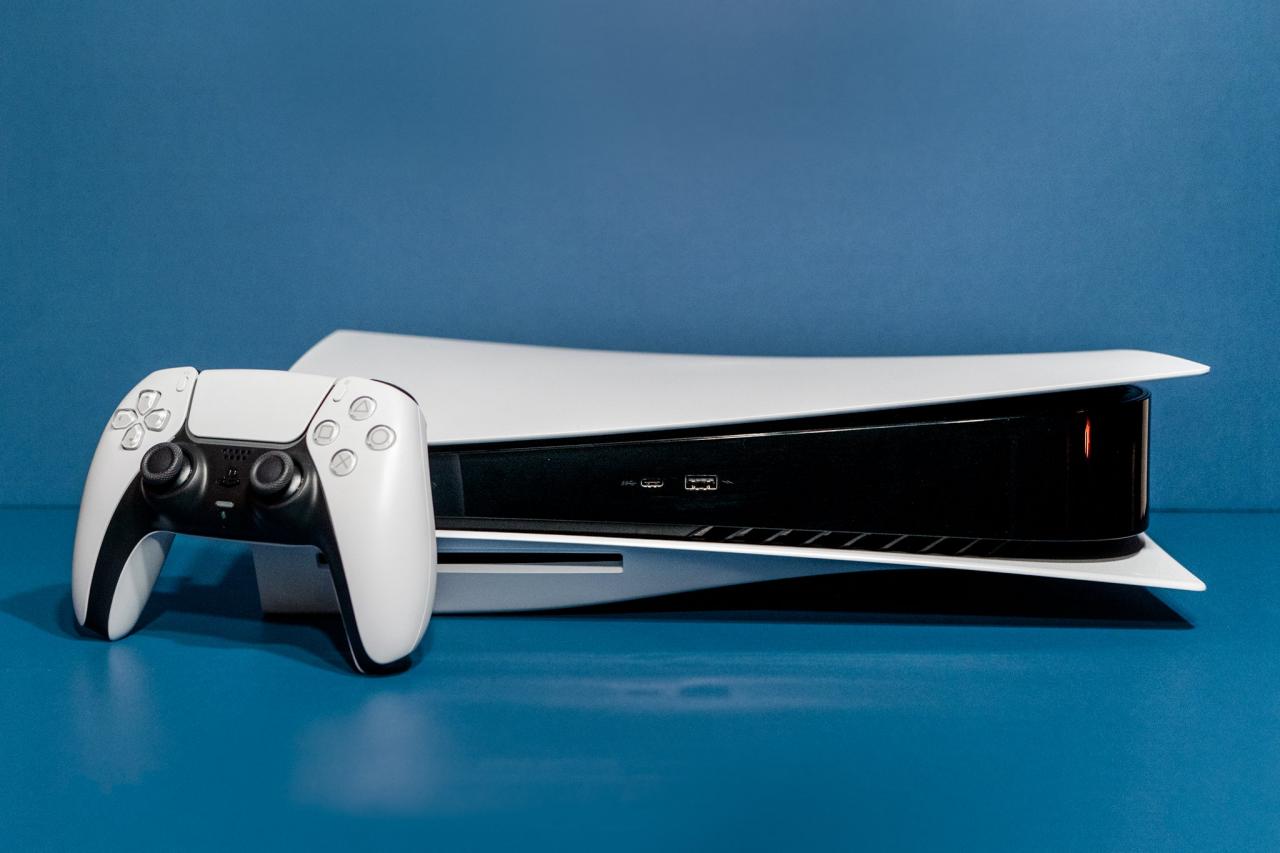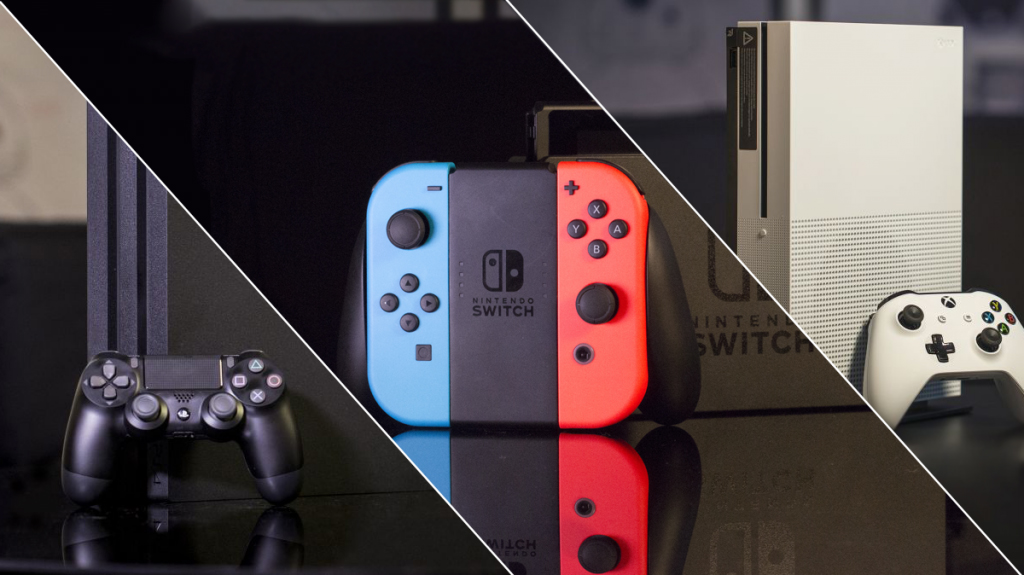Next-Gen Consoles: The Future of Home Entertainment

The arrival of a new console generation is always a momentous occasion, representing a leap forward in technology, design, and interactive possibility.
These machines aren’t just incremental updates; they are technological time capsules, embedding the latest innovations in silicon and software, setting the baseline for graphical and gameplayfidelity for the next half-decade or more.
The transition from one generation to the next is a pivotal event, marking the end of the old era’s limitations and the beginning of a fresh canvas for creators.
The current generation of consoles—spearheaded by devices like the PlayStation 5 (PS5) and the Xbox Series X|S—has ushered in a new standard, focusing less on pure graphical horsepower (though there’s plenty of that) and more on eliminating the tedious bottlenecks that plagued the previous era.
This generation is defined by speed, immersion, and accessibility. It’s about making the act of playing frictionless, allowing us to dive into massive, detailed worlds with unparalleled swiftness.
We’re looking beyond simple resolution bumps toward experiences that engage more of our senses and streamline the relationship between player and game.
The Fundamental Leap: SSD and the End of Waiting

Perhaps the most significant, yet least visually impressive, change brought by the newest consoles is the universal adoption of custom Solid State Drives (SSDs).
While previous generations relied on slow, mechanical Hard Disk Drives (HDDs), the SSD marks a complete architectural revolution, affecting everything from game design to player behavior.
The Architectural Shift Towards Speed
The new SSDs are not simply faster storage devices; they are integrated components of the console’s operating system and memory management, designed to eliminate the notorious bottleneck between the storage and the processor.
A. Eliminating Loading Screens
With traditional HDDs, developers had to employ numerous tricks—long tunnels, slow elevator rides, and repetitive splash screens—to hide the minutes required to stream massive textures and models into memory.
The new SSDs, particularly the custom architecture in the PS5 and the Velocity Architecture in the Xbox Series X|S, boast input/output (I/O) speeds up to 100 times faster than previous consoles.
This raw speed means games can load from the menu to the action in mere seconds, effectively dissolving the concept of a loading screen for many titles.
B. The Impact on Game Design
The true genius of the SSD is its ability to free developers from old design constraints.
- A. Instant Travel: Fast travel in massive open-world games becomes genuinely instant, encouraging exploration rather than punishing it with lengthy loading bars.
- B. Dynamic Streaming: Developers can stream assets into the game environment on the fly, eliminating the need to carefully compartmentalize levels or duplicate assets. This allows for vast, seamless worlds with complex, unique geometry and textures.
- C. Memory Management Revolution: On the PS5, the custom compression and decompression blocks allow data to be transferred and processed so rapidly that the storage drive essentially acts as an extension of the system’s RAM (Random Access Memory), giving developers unprecedented freedom.
C. Quick Resume and Seamless Switching
The SSD’s speed underpins features designed for player convenience. The Quick Resume feature on Xbox Series X|S allows players to suspend multiple games in their exact state—including the mid-fight moment or inventory screen—and switch between them instantly.
This removes the “commitment anxiety” that came with closing one huge game to start another.
Immersion Redefined: Graphics and Sensory Feedback

Beyond simple loading times, the next-gen consoles have pushed the boundaries of visual fidelity and, crucially, introduced new layers of sensory immersion that go beyond the screen.
Visual Power and the New Fidelity Standard
The new consoles leverage advanced graphical features that were once restricted to high-end PC gaming, fundamentally changing the look and feel of interactive worlds.
A. Ray Tracing Technology
This is the flagship visual feature of the current generation. Ray Tracing is a sophisticated rendering technique that simulates the physical behavior of light, tracing individual light rays as they bounce off surfaces in real-time.
- A. Hyper-Realistic Reflections: Metal surfaces, water, and polished floors reflect the environment with true physical accuracy, making worlds feel more grounded and believable.
- B. Accurate Global Illumination: Light sources naturally illuminate and cast complex, soft shadows based on the environment, eliminating the “fake” look of pre-baked lighting found in older games.
- C. Enhanced Audio Fidelity: While primarily visual, ray tracing techniques can also be applied to sound, simulating how sound waves bounce and attenuate in a 3D space, contributing to more immersive spatial audio.
B. Resolution, Frame Rates, and Performance Modes
The debate over 4K versus 60 frames per second (FPS) has been a defining characteristic of this generation.
- A. The 120 FPS Option: For the first time, high-end competitive games can run at 120 FPS on console, drastically reducing input lag and increasing visual clarity for players with compatible displays. This has become the standard for competitive esports titles on console.
- B. Prioritizing Fidelity vs. Performance: Many modern games offer players a choice: a Fidelity Mode that targets high resolution (often 4K) with Ray Tracing at 30 FPS, or a Performance Mode that targets a smoother 60 FPS by reducing resolution or sacrificing some Ray Tracing effects. This flexibility empowers the player to customize their experience based on their personal preference.
Sensory Evolution: The PS5 DualSense Controller
Sony’s DualSense controller for the PS5 is a crucial example of innovation moving beyond pure graphics. It introduced entirely new forms of player feedback.
A. Haptic Feedback
This is an evolution of the traditional rumble feature. Haptic technology uses highly precise actuators to simulate fine, localized sensations.
- A. Environmental Feelings: You can feel the distinct crunch of walking on gravel, the squish of trudging through mud, or the subtle thump of hitting a fence, all transmitted directly through your hands.
- B. Directional Cues: Haptic pulses can be used to guide the player’s attention or signal damage coming from a specific direction, blurring the line between sound and touch.
B. Adaptive Triggers
The trigger buttons include programmable resistance. Developers can dynamically control the tension and resistance of the triggers to mimic real-world interactions.
- A. Weapon Realism: Pulling the trigger on a shotgun might require a strong, stiff pull, while firing a machine gun might introduce a rapid, light clicking resistance.
- B. Tool Interaction: Drawing a bowstring feels progressively harder, and pressing the accelerator in a damaged car might feel loose and wobbly, adding a new layer of tactile immersion to the gameplay.
The Ecosystem War: Content, Services, and Backwards Compatibility
The current generation is characterized by the ongoing “ecosystem war” between platform holders, focusing less on hardware specifications and more on the value proposition of their content and services.
Subscription Dominance and Game Pass
Microsoft has leveraged the release of the Series X|S to push its Xbox Game Pass service, fundamentally changing the value equation for consumers.
A. The Netflix of Games
Game Pass offers hundreds of titles, including all first-party Xbox exclusives on launch day, for a single monthly fee. This is a crucial element of the current console generation’s strategy.
- A. Value Proposition: For many players, the monthly cost of Game Pass is significantly less than the price of one new AAA game, making it an extremely attractive entry point into the next generation.
- B. Discovery Engine: The service encourages players to sample titles they might never have bought outright, boosting exposure for smaller and experimental games.
- C. Cloud Integration: The Xbox Cloud Gaming service, bundled with Game Pass Ultimate, allows users to stream their library to phones, tablets, and even older consoles, expanding the reach of the new console ecosystem far beyond the box itself.
Backwards Compatibility and Player Libraries
Both Microsoft and Sony recognized that players are increasingly invested in their existing digital libraries.
A. Seamless Previous Generation Support
The Xbox Series X|S supports nearly four generations of Xbox games, often enhancing them with features like improved frame rates (FPS Boost) and higher resolution rendering. This allows new console owners to instantly access a huge library of optimized content.
B. PlayStation’s Approach
While the PS5 primarily focuses on PS4 compatibility, it offers significant enhancements for many older titles, ensuring that players’ investments in the previous generation carry forward and look better than ever. This focus on protecting player investment has become a key selling point.
Beyond the Box: Future-Proofing and Unseen Potential
The true power of this generation lies not just in what the consoles can do today, but in the potential they hold for future updates and hardware integration.
The Headroom for Developers
The current console cycle is designed to have significant headroom—processing power that developers can fully utilize years into the console’s lifespan as they become more familiar with the hardware.
A. Variable Rate Shading (VRS)
VRS is a technology utilized by the Xbox Series X|S that allows the GPU to prioritize processing power on the most visually important parts of the screen (like the center focus area or the main character) while reducing the detail in less important areas (like the periphery).
This allows developers to maintain higher frame rates and fidelity without needing proportionally massive raw power, optimizing the performance curve for years to come.
B. Advanced Audio Rendering
Both consoles invested heavily in dedicated audio hardware. The PS5’s Tempest 3D AudioTech is a specialized chip dedicated to rendering hundreds of concurrent sound sources in true three-dimensional space.
This allows for incredibly precise positional audio through standard headphones, providing a layer of immersion that is often overlooked but profoundly impactful. Developers are just beginning to scratch the surface of how to use this dedicated audio engine to enhance gameplay (e.g., locating enemies purely by sound).
C. Mid-Generation Refreshes
While not official, the history of consoles suggests mid-cycle refreshes (like the PS4 Pro and Xbox One X) are likely.
The foundational technology—the high-speed SSD architecture, the Ray Tracing capable GPUs, and the dedicated audio engines—provides a stable platform for potential future upgrades focused on things like higher native 8K output or even more aggressive ray-tracing techniques as costs fall.
Conclusion
The current generation of consoles represents a profound shift in the philosophy of interactive entertainment. They are not simply faster versions of their predecessors; they are fundamentally redesigned systems built to eliminate friction and elevate immersion.
The true measure of their success lies not in the teraflops they possess, but in the time they save us and the experiences they unlock.
The core victory belongs to the SSD. By eradicating loading times, the consoles have changed a fundamental unit of time in gaming. Five years ago, twenty seconds was an acceptable load time; today, five seconds feels slow.
This speed has allowed developers to think in truly seamless terms, designing huge worlds that are truly interconnected rather than compartmentalized. This is a victory for the player’s precious time and attention, making gaming feel less like a commitment and more like an effortless activity.
Equally important is the emphasis on sensory feedback. The DualSense controller is a testament to the idea that innovation doesn’t always have to be about pushing pixels.
By adding precise haptics and adaptive resistance, Sony elevated the sense of touch from a simple vibration warning into a nuanced form of communication, making the controller feel like a dynamic part of the game world itself.
This focus on deeper, more varied immersion will undoubtedly influence controller design and sensory feedback across the entire industry in the years to come.
Finally, the fierce competition in the ecosystem space—spearheaded by Xbox Game Pass—has redefined consumer expectations.
Players now expect a massive library of high-quality games as part of their console investment, rather than paying full price for individual titles.
This subscription model ensures a constant influx of content and lowers the financial barrier for new players to jump into the latest generation. The consoles of today are inseparable from the services and communities they host.
The current next-gen machines are powerful convergence devices. They blend the lightning speed of high-end PCs with the plug-and-play simplicity of consoles, all while folding in years of digital library investments and providing access to massive streaming services.
They are the foundational pillar for the future of interactive storytelling, proving that the home console remains a vital, irreplaceable center of the gaming universe, poised to deliver ever-more stunning and intimate experiences.